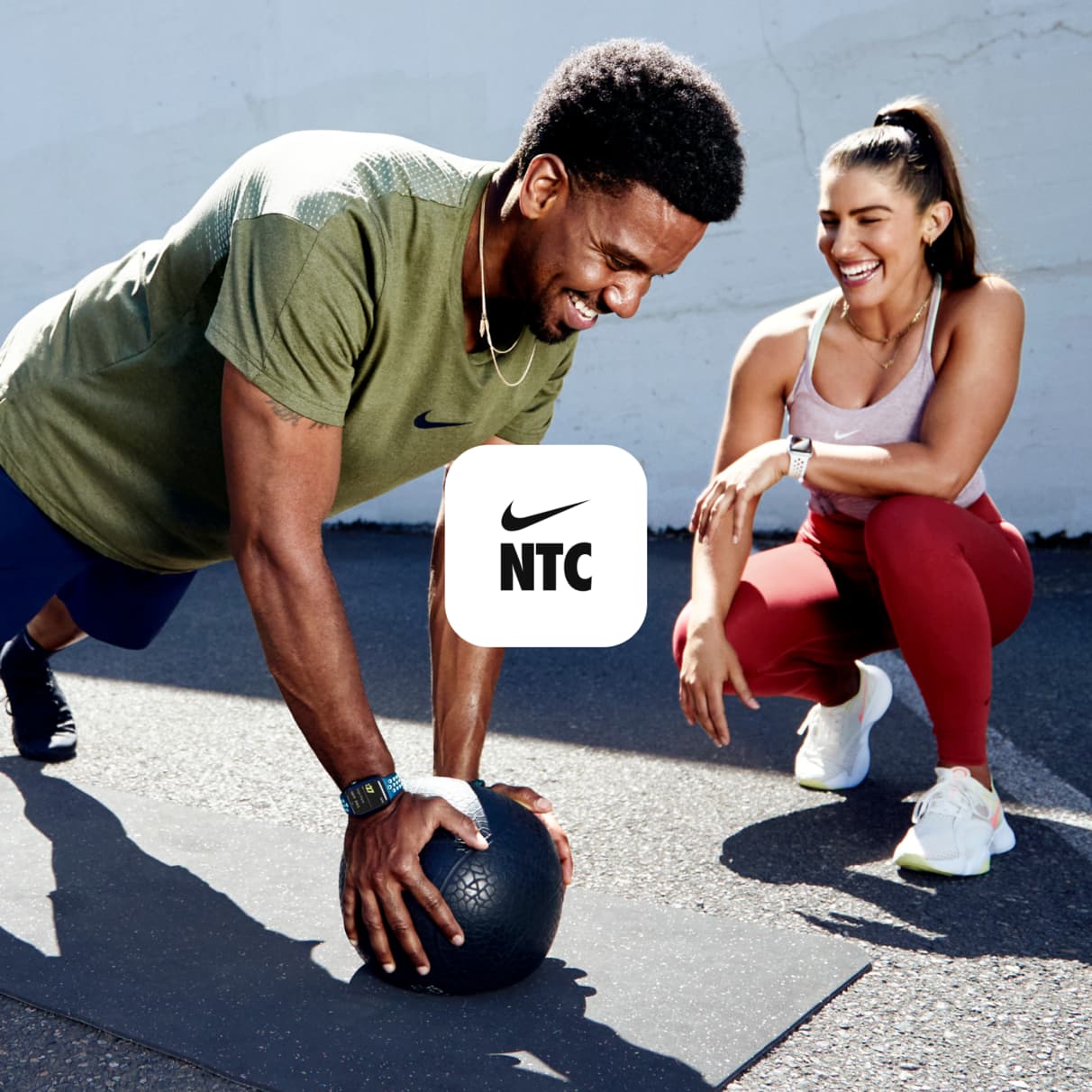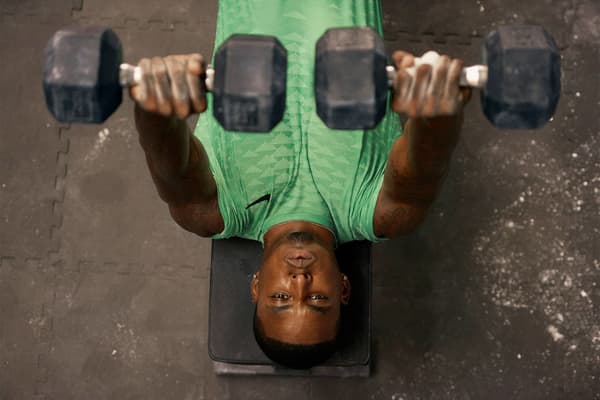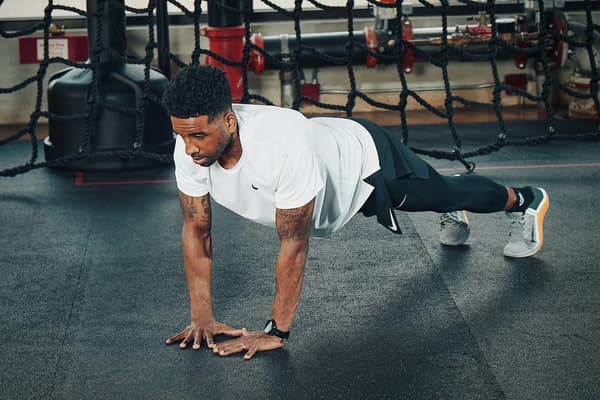Put These 6 Benefits of a HIIT Workout to Work for You
Sport & Activity
HIIT training, with its focus on short bursts of intense exercise, is perfect if you're short on time and it can help improve your fitness in several ways.

High-intensity interval training (HIIT) focuses on short bursts of intense exercise. If you're short on time but want to feel the burn, HIIT workouts are for you.
HIIT has maintained its popularity over the years for one good reason: it works! This type of interval training has a number of science-backed benefits linked to weight loss, enhanced performance and cardiovascular fitness. So what exactly is HIIT?
HIIT workouts alternate between short periods of high-intensity anaerobic exercise and short periods of recovery. During the period of anaerobic exercise, you work at maximum capacity. Your heart rate is high, anywhere between 80 and 95 percent of your maximal heart rate (MHR).
It's hard to maintain this heart rate for very long. That's why the work period of any high-intensity interval training is limited. You give it all you've got for anywhere from 15 to 45 seconds, depending on the type of exercise you're doing and your fitness levels.
After this short burst of exercise, you recover. This might be active aerobic recovery, like switching from sprinting to walking on a treadmill. Or you might jump off the treadmill to catch your breath. In this recovery period, which typically lasts up to a minute, you're letting your heart rate come back down. You're giving your body a quick break to recover before it has to get back to work.
Alternating between work and recovery is the foundation of high-intensity interval training. It's short, intense and powerful. An entire HIIT workout shouldn't take long—15 minutes is usually recommended. If you've worked at 95 percent of your MHR, you'll know why—it's hard to sustain! In fact, it's better to limit the duration of HIIT to avoid total burnout.
What Does a HIIT Workout Include?
The types of exercise in a HIIT workout might include:
- Sprinting
- Skipping
- Stationary cycling
- Rowing
- Plyometrics, such as box jumps or burpees
- Weightlifting circuits
These exercises will be performed in the work period, followed by a rest period. This interval will be repeated for the duration of the workout as you go back and forth, alternating between the two.
These exercises activate and recruit fast-twitch muscle fibres. This is because the type of activity demands a high power output and these muscles are capable of doing that. These muscle fibres rely on anaerobic respiration to fuel their contractions.
The key point of a HIIT-based workout is that you have to perform an exercise that you can max out on. Walking, or any other type of low-intensity steady-state cardio (LISS), won't cut it. That's because your heart rate won't get high enough and you won't reap the benefits of HIIT.
What Are the Benefits of HIIT?
1.Burn More Calories
Despite the short workout length of HIIT, you'll be burning a lot more calories than you would during aerobic exercise.
A study published in the Journal of Strength and Conditioning Research conducted a trial to examine the difference in calorie burn amongst different exercise groups: HIIT, resistance training, running and cycling.
Each group performed 30 minutes of exercise. The HIIT group burned up to 30 percent more calories than the other groups. Despite only actually exercising for a third of the time (with the rest periods factored in).
That said, you don't have to do HIIT for 30 minutes to reach enhanced calorie burning. Fifteen minutes achieves the same calorie burn as an hour-long steady-state cardio session.2.Increase Metabolic Rate
HIIT involves anaerobic exercise. Anaerobic means "without oxygen". As a result, after HIIT, there will be an increase in oxygen uptake. This is also referred to as excess post-exercise oxygen consumption (EPOC). An increased oxygen uptake means your body has to work harder, which elevates your metabolic rate.
The benefit of a faster metabolism is better fat burning, even at rest.3.Enhance Performance
Studies show that HIIT training can improve an athlete's endurance, speed, agility and power. This is because it leads to key physiological adaptations such as cardiovascular efficiency (better oxygen consumption) and tolerance to the build-up of lactic acid.
A randomised controlled trial published in 2016 found that, after five weeks of HIIT, participants improved their VO2 max by 9 percent. Your VO2 max is a marker of how efficiently your body can use oxygen during exercise. It'll help you run faster and more efficiently, with studies showing that your VO2 max accounts for 70 percent of the variation in race performance.4.Improve Heart Health
For individuals with high blood pressure, HIIT has been shown to help lower blood pressure and reduce heart rate. A HIIT workout can be an effective component of your treatment plan to improve heart health. For individuals with normal blood pressure, it can help maintain healthy blood flow.
Research has found that HIIT can improve the heart's structure, for example chamber enlargement. That means better cardiac output, or how much blood the heart is able to pump to the muscles with each beat.5.Preserve Muscle Mass
For beginners, some types of high-intensity training, like sprinting, can build muscle. A 12-week HIIT trial found that participants were able to lose fat (2kg on average) and build muscle in the legs (0.4kg) and the trunk (0.7kg).
Being able to lose fat and build muscle is an appealing fitness goal for many. It's important to note that the trial was done on overweight young males who were beginners.
In well-trained individuals, HIIT may not be the best method for building muscle. However, HIIT has been shown to help muscle retention, compared with other types of cardio, particularly during phases focused on fat loss. If you want to enjoy the other benefits of HIIT without risking your muscle mass, HIIT is a great option.
Low-intensity or moderate-intensity continuous training can break down muscle mass as well as fat mass, which can have a negative effect on your metabolic rate. The more muscle you can preserve, the more metabolically active you are.
As such, HIIT is an ideal workout for people looking to lose fat and build or preserve muscle.6.Save Time
One of the key benefits of HIIT is its time efficiency. If you can only commit 15 minutes to a workout, HIIT is the best option for you. You'll enjoy the same health benefits as you would in a longer, less intense workout. You'll also enjoy some unique benefits, based on the mechanisms of how HIIT works.
How Does HIIT Work?
It may seem unusual that a 15-minute workout is associated with so many benefits. Surely you'd have to work out for at least an hour, right? There is some truth to this. If you performed LISS for 15 minutes, you wouldn't get nearly the same benefits. The benefits of HIIT come from working anaerobically. Here's why.
In the work period of HIIT, you are performing anaerobic exercise. As defined by The American College of Sports Medicine, anaerobic exercise is "intense physical activity of very short duration, fuelled by the energy sources within the contracting muscles and independent of the use of inhaled oxygen as an energy source".
Anaerobic means "without oxygen". Without oxygen, our cells produce adenosine triphosphate (ATP) via glycolysis. Glycolysis is the breakdown of glucose, the energy source within the contracting fast-twitch muscle. Less ATP is produced in anaerobic exercise than aerobic exercise—and the lack of oxygen makes it less energy efficient and the lactic acid build-up is greater. As a result, you can't perform this type of exercise for very long before you need a break.
That's why you alternate between work and rest with high-intensity interval training. In the rest period, you switch to aerobic metabolism, clearing lactic acid to allow you to produce the necessary power output once more. EPOC will be created, elevating your post-workout metabolic rate to help aid recovery.
Does HIIT Really Work?
Numerous studies have concluded that HIIT really does improve your fitness and health. Incorporating it into your workout routine can help you get the results you're looking for. The best part is it only takes 15 minutes or so. When it comes to HIIT, you've got nothing to lose and everything to gain.





